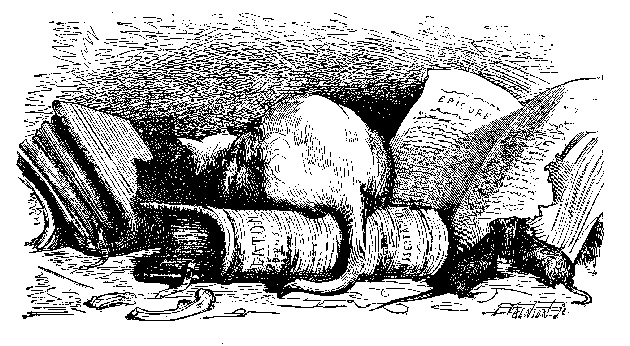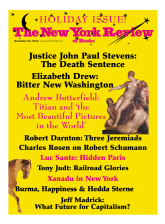In response to:
Toward 'the Digital Public Library of America': An Exchange from the November 25, 2010 issue

To the Editors:
The exchange between Tony Simpson and Robert Darnton [“Toward ‘the Digital Public Library of America,'” NYR, November 25] deals almost exclusively with printed books, with only slight reference to resources created with newer technology. While using computers and the Web to democratize access to the world’s accumulated knowledge in print is obviously a major and worthwhile project, ignoring the materials that are being created digitally, especially in the humanities, is shortsighted.
Many of these collections are concentrating on specific areas of study, associating materials from a spectrum of origins, adjoining valuable additional information, or combining all of these functions to create new resources for research and instruction that will fundamentally alter the nature of education in the decades to come. It behooves any initiative for creating a digital library of the future to include the large and growing number of such collections.
A major benefit of computer technology has been the ability to digitize materials that formerly resided in special collections accessible only to those who could afford to travel to them and reside near them long enough to utilize them. The hundreds of such collections, now ready to hand for anyone with a computer and Web access, are represented by such initiatives as the Catalogue of Digitized Medieval Manuscripts, the Prehistoric Stones of Greece Project, the Duke Papyrus Archive, and the East London Theatre Archive of thousands of theater programs—all stimulating aids to scholarship.
For historians, there exist now such valuable resources as the Digital Library on American Slavery, the Great War Archive (over 6,500 items contributed by the general public and dealing with some aspect of World War I), the Holocaust Collection (text, historical photographs, maps, images of artifacts, and audio clips), and Explorations in Black Leadership (oral history).
For art historians, there is the especially imaginative Digital Michelangelo Project to digitize the artist’s three-dimensional works with lasers in order to reproduce them accurately for study around the world. And for students of literature and its social environment, there are such digital collections as Romantic Circles, which distributes approximately 3.5 million pages each year to users in over 160 countries, and the Victorian Web, which covers biography, history, politics, gender, philosophy, religion, science, technology, literature, visual arts, music and theater, and economics in the Victorian era. Collections so structured thematically and collectively are clearly a major step forward in providing educational materials for the entire population.
For the generation now passing through our schools and colleges, where they are learning to access all kinds of information through electronic channels, whether that information originally appeared in print or was “born digital” will be of decreasing importance. Working with their Kindles, iPads, Nooks, and whatever tools succeed these portals to knowledge, they will concentrate more on the ultimate resource than on the path to it.
Aware of our own history, we must recall that the Reformation in Europe was spurred by the conviction that access to the Bible need not be restricted to those who could read it in Latin. We must consider the likelihood that future generations of students will question the need for intermediary teachers when the collective knowledge of the entire culture will be available literally at the click of a mouse.
Joseph Raben
Professor Emeritus, Queens College/CUNY
Founding Editor, Computers and the Humanities
Barrington, Rhode Island
Robert Darnton replies:
I heartily agree that a future Digital Public Library of America (DPLA) should include many kinds of digitized material, whether film clips, sound recordings, virtual tours of architectural monuments, or data points from astronomical observations. I emphasized written texts, because we face a problem of feasibility.
By drawing on databases that already exist and that contain millions of books from the public domain, we can lay a firm foundation for the DPLA and build incrementally from there. Of course, cultural artifacts of all sorts could be built into that structure from the beginning. Most of them will be “born digital,” like the people who will consult them—“digital natives” at home in a digital future that we can barely imagine but that we must prepare by making the cultural heritage of humanity freely accessible to all.
This Issue
December 23, 2010



